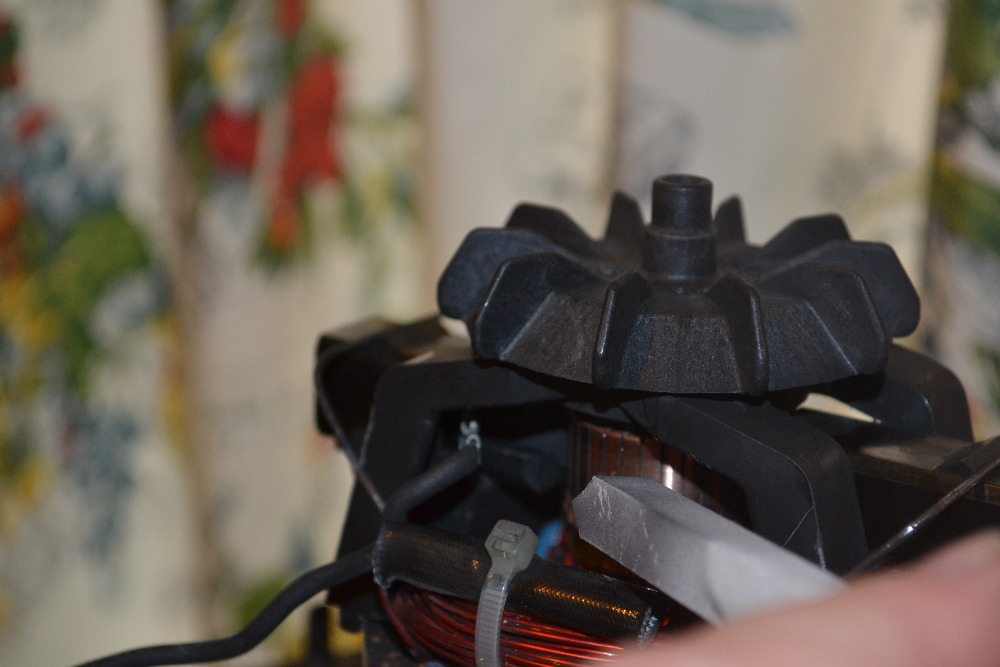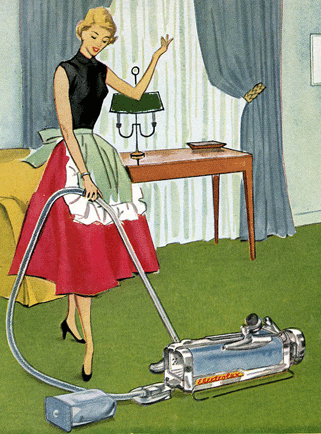|
Thread Number: 17552
Seating Motor (Carbon) Brushes |
[Down to Last] |  |
| Post# 189698 7/12/2012 at 21:03 (4,299 days old) by eurekastar (Amarillo, Texas) | ||
|
From time to time, I see people asking about "seating" new carbon brushes on a vacuum motor. The seating procedure helps to conform the brush to the shape of the commutator. The ends of many (or most) brushes are square. They therefore needed to be "rounded" in order make good contact with the commutator. The procedure is fairly simple.
First, the motor needs to be running. Make certain the motor is stable, because it will be spinning at several thousand RPMs!
Second, simply place the seating stone on the leading edge of the commutator. The dust generated from the stone will get up under the brush and begin to round it out. In the photo, you can see the brush and holder to the left of the stone. The lead wire in the photo is connected to the brush itself. Continue holding the stone to the commutator until there is no excess sparking. (If the commutator is in good shape, there really shouldn't be a lot of sparking anyway.) Repeat that procedure on the other brush.
Third, UNPLUG THE MOTOR. Then remove the brushes to inspect them. They should be curved by this time. After inspecting the brushes, blow out any dust left behind by the stone. Be sure to blow dust out of the brush holders too. I just us another vacuum for this part of the procedure.
Fourth, reinstall the brushes and reconnect the lead wires.
And that's it! 
| ||
| Post# 189699 , Reply# 1 7/12/2012 at 21:07 (4,299 days old) by eurekastar (Amarillo, Texas) | ||
|
| ||
| Post# 189700 , Reply# 2 7/12/2012 at 21:09 (4,299 days old) by eurekastar (Amarillo, Texas) | ||
|
| ||
| Post# 189704 , Reply# 4 7/12/2012 at 21:52 (4,299 days old) by eurekastar (Amarillo, Texas) | ||
|
Older Units On some older models, the motor design doesn't provide access to the commutator. Older pre-516 Kirby motors, Royals, and older Rainbow motors come to mind. The brushes on Kirby motors are fairly well rounded already, so I just ran the vacuum with the belt off for about 30 minutes to help seat them more fully. That's about the only thing I know to do with older Rainbow motors too.
By the way, the motor in the photos is a Rainbow D4. | ||
| Post# 190272 , Reply# 6 7/16/2012 at 22:34 (4,295 days old) by eurekastar (Amarillo, Texas) | ||
|
@ Dean | ||
| Post# 190293 , Reply# 7 7/17/2012 at 07:40 (4,294 days old) by sarasvacshack () | ||
|
No You want to wire the motors in series, one lead to one wire on each motor, then connect the remaining one wire on each motor together. | ||
| Post# 190317 , Reply# 8 7/17/2012 at 11:24 (4,294 days old) by eurekastar (Amarillo, Texas) | ||
|
| ||

 Comes to the Rescue!
Comes to the Rescue!